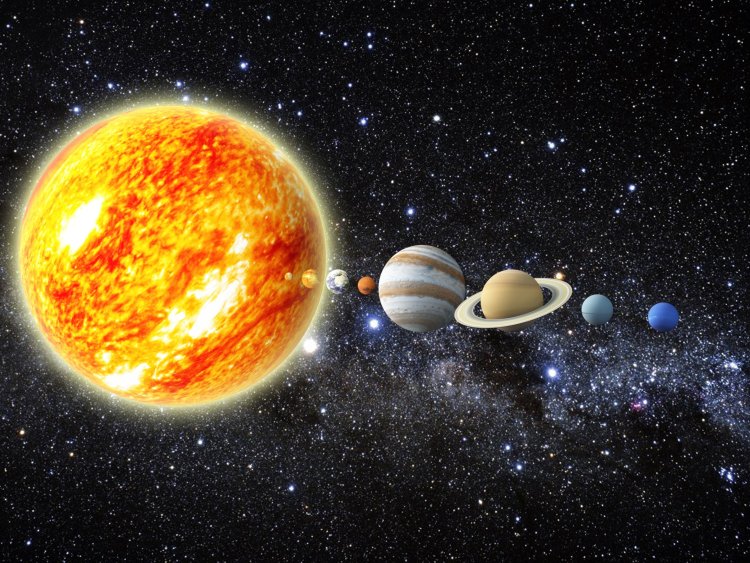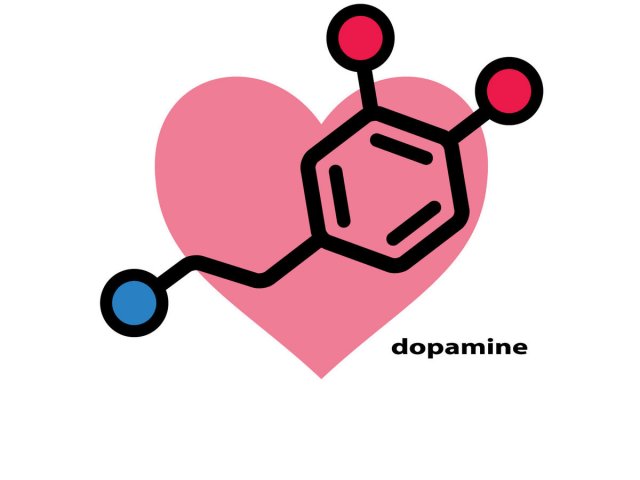The solar system seems very familiar to many people, ever since the high school. The lifeless, harsh Mercury, closest to the Sun, hot Venus, and cold Mars, where life might once have existed, followed by the gas giant planets Jupiter and Saturn and the distant Uranus and Neptune.
Scientists are very interested in the planets closest to us: Mars and Venus, often called “the Earth sister.” It has been suggested that Venus may have had an ocean during the first two billion years after its formation; it may have been the first planet in the solar system to have life. Surprisingly, some scientists believe that life may still exist there today. But in what form? These could be, for example, microbes living in clouds (which consist of 75-80% sulfuric acid), where there is a suitable temperature, pressure, and water for this.
Venus is similar to Earth in many ways, but with a “hellish” climate: pressure of 100 atmospheres on the surface and a temperature of 500 degrees Celsius, poisonous carbon dioxide atmosphere and the strongest greenhouse effect. Many scientists compare Venus to the Earth of the future precisely because of this greenhouse effect. The planet has heated up so much that its entire ocean has literally boiled away. Today, Venus is one of the most mysterious objects in the solar system and is very difficult to study.
As for Mars, it is known that once there were seas on its surface that evaporated and lakes of fresh water that dried up. It rained and there were rivers on Mars. Over time, due to solar winds, the red planet lost most of its water and almost lost its atmosphere, causing irreversible climate change. Half a billion years after its formation, the planet lost its magnetic field, because its iron core had cooled down, and it was exposed to the flow of charged particles flying from the Sun. Thus, the Earth's closest neighbor after Venus turned into a cold desert under a layer of rusty dust.
However, the Martian Ocean has not disappeared without a trace. “There are large reserves of water ice under the Martian sand. Moreover, the concentration of this ice is very small at the equator, but the further we move toward the poles, the more of it is found, and in some places up to 35% (by mass) of water is found in the Martian soil,” Vyacheslav Avdeev, astrophysicist, member of the Astrophysical Center of the Russian Academy of Sciences, says.
More than four billion years ago, the planets of the solar system were formed from the whirling remnants of a dust cloud. And at the dawn of their existence, Mars and Earth were very similar: they had plenty of carbon, iron, and water, which is essential for the emergence of life. But the planets’ different distance from the Sun and their difference in size played their part, and in the end, Earth was luckier than the rest of the solar system.
Mars is followed by four gas giants; it is hard even to imagine life on them, which is not true for their amazing satellites. Let's find out about the most interesting moons, in terms of possible existence of life.
Jupiter is called the main bully of the solar system. Its powerful gravitational field “tosses,” throws asteroids in the direction of other planets. The gas giant, whose equatorial radius is 11.2 times larger than that of Earth, is known as the largest planet in the Solar System. Its mass is 318 times greater than Earth's.
The giant Jupiter has more than 79 moons – practically its own solar system! Of course, some of these celestial bodies are of great interest in terms of the search for life. One of these objects is Io, the most volcanically active satellite in the solar system. There are hundreds of volcanoes erupting simultaneously on its surface, their emissions rise up to 300 km high – directly into space. There is a constant stream of red-hot lava on Io. Geological activity is considered to be a clear marker for the possibility of life, because in order to turn organic molecules into whole cells, you need a dynamic geological environment. The presence of life on Io is, of course, highly questionable. Things are much more optimistic with another Jupiter moon, Europa.
Europa is slightly inferior in size to the Earth's moon (diameter 3,121.6 km). The satellite was discovered by Galileo Galilei in early 1610. Scientists have long believed that there is a vast ocean of liquid water under the snow and ice of Europa; the same is true for other Jupiter satellites – Ganymede and Callisto, also discovered by Galileo Galilei.
Scientists estimate that the ice shell of Europa is at least several dozens of kilometers deep. Today, many researchers are pondering how to penetrate deep into Europe's salty ocean. In the mid-2020s, the U.S. spacecraft Europa Clipper is to go into space to explore Europa. It is assumed that there should be a powerful circular current inside Europa. French scientists have come to this conclusion by building a computer model of the celestial body.
Another Jupiterian satellite – Ganymede, the largest moon of this gas giant (diameter 5,268.2 km), is worth mentioning, too.
“According to some modern models, the ocean of Ganymede is very unusual and reminds of a layer cake: a layer of ice, a layer of water under it, then ice again (and this ice has a different structure and is formed at higher pressures), then another layer of water, but saltier, then a layer of so-called hot ice, then a layer of water and finally a layer of ice, perhaps bordering the silicate part of the satellite,” Vyacheslav Avdeev said.
But that's not the most interesting part: it turns out that the very first ocean of Ganymede has such a phenomenon as snow going up!
“Imagine that we are in a submarine sailing in the upper ocean of Ganymede. So, sometimes the water there starts to freeze, but those ice floes are less dense than the surrounding salty solution of the ocean, so they go up. If we were on that submarine, we would be able to see these snowflakes go up and settle on the upper ice layer,” Avdeev explains.
The acidic composition of water on the satellites of the planets of the solar system differs from that on Earth, yet there is a possibility that microorganisms, once relocated there, could survive.
Let's move on to another gas giant – Saturn. By far, its most promising moon in the search for life is Titan, so often compared to the early Earth. Saturn's largest moon, Titan is a truly amazing celestial body.
Titan, unlike other moons in the solar system, has a uniquely dense atmosphere consisting of molecular nitrogen (98.4%) and methane (1.6%). Its thickness is about a thousand kilometers and its density is four times the density of the Earth's atmosphere. Titan is also similar to Earth in terms of the liquid cycle, with methane circulating on Titan – the same gas that burns in our gas stoves. It is the temperature of minus 180 degrees Celsius that makes it liquid. Cold Titan has rivers and seas of liquid methane and ethane, as well as mountains whose base is believed to contain water ice. There are no other liquid reservoirs like those on Titan on any other satellite in the solar system. Methane may appear here as precipitation, similar to our rain on Earth. Large methane droplets fall very slowly to the surface, presenting quite a spectacular show.
Landing on Titan (an animation of the Cassini-Huygens mission in 2005). Source: NASA Jet Propulsion Laboratory.
Titan's landscapes are strikingly similar to ours on Earth. Lakes and seas, rounded smooth rocks, mountains and clouds seem so familiar that you may even believe for a moment that there is life going on somewhere. However, there is no direct evidence for this yet, although the Titan conditions are quite conducive to the origin of life.
Another satellite of Saturn, Enceladus, is no less interesting. The icy Enceladus has geysers of water and organic compounds and, presumably, a global subglacial ocean of liquid, hot, salty, carbonated water.
In the course of research on Enceladus, not only geysers and emissions of water vapor, but also emissions of ice floes and microscopic sand grains were found. The formation of such grains of sand requires a high-water temperature: about 90 °C. Previously, before the studies of Enceladus, it was completely unclear how the outer ring of Saturn (E ring) could have so much water.
Enceladus has an atmosphere, though it is highly rarefied. It mainly consists of water vapor, but it also has nitrogen, carbon dioxide, and methane. The satellite's core is silicate. The surface of Saturn's icy moon has a temperature of about -200 °C. It is the brightest body in the Solar System: Enceladus, with its relatively young and dust-free icy surface, has been found to reflect a record amount of light and sparkle with a dazzling whiteness.
In 2018, the Nature journal published an article reporting that complex organic compounds had been discovered on Enceladus. That same year, scientists from Vienna recreated the conditions similar to those on this icy moon of Saturn in their laboratory. Using the example of the archaea Methanothermococcus okinawensis, the experiment showed that terrestrial organisms are quite capable of surviving on Enceladus.
Enceladus has favorable conditions for the origin and existence of life. Having started in 2004, studies of Saturn's icy moon continue today. U.S. scientists have prepared a mission concept called Enceladus Orbilander to search for life there. The program could start in the late 2030s, then the ship could orbit Enceladus by 2050.
The planets and their mysterious satellites are likely to surprise us again and again. Hopefully, with advances in technology, we will be able to learn much more about our Solar System neighbors.
Photo: zzoplanet / 123RF






















